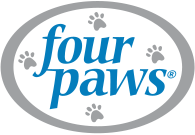Dog Playtime: Tips for Safe Family Play
Dogs and kids love to play, and when you put them together, you’ve doubled the fun. However, there must be some rules in place to keep the play safe.
Supervise Play
First, supervise play. Never leave a toddler alone with a dog. Very small children make quick jerking movements and high-pitched noises. Both the movement and noise can be similar to the way in which wild prey behaves and may trigger a dog to attack. Even older children should be supervised. Sometimes a child, or a dog, may get carried away with a game and start to play more roughly. That’s when you need a time-out for both sides.
Games
Although a game of tag may seem like a good idea, and dogs love to chase, they may nip or bite if they get too excited. Consider a game of hide-and-seek instead. The dog is “it” in this game. To begin, have the child hide in fairly easy places. Hold the dog until the child has hidden and then tell him to find her. Occasionally, a child may need to make a noise to help direct the dog, but dogs generally catch on very quickly and have no trouble finding the children.
Toys
Toys offer interactive fun as well. Many dogs love to retrieve balls, and retrieving is good, safe exercise. Make sure that the ball fits the dog; a Chihuahua can’t manage a tennis ball, and some balls may be a choking hazard for big dogs. The Four Paws® Crunch & Crackle Tug can work as both an interactive toy and one that a dog may play with by himself. Many dogs enjoy tug-of-war, but again, be ready to stop the game if the dog becomes too serious. Teach your child to drop the toy if the game becomes too rough.
Supervision is the key even if your dog is playing with a toy by himself. First, some dogs are very protective of items that they consider “theirs.” Teach your child to leave a dog alone if he has a toy and to never try to take the toy from the dog. You can teach a dog to “drop it” or to “trade” for a treat or another toy, but children shouldn’t grab for a toy in a dog’s mouth.
Protect Your Dog
Protect your dog during playtime. Supervise play until you know how your dog reacts to a toy. Some dogs can play with a stuffed toy for years, gently mouthing it or just carrying it around. Other dogs will destroy a stuffed toy immediately. Chew toys are the same. Some dogs can get hours of enjoyment and never destroy the toy. Other dogs rip out pieces, which may present a choking hazard. If your dog doesn’t choke, he might still ingest part of a toy, which could lead to intestinal blockage.
See how your dog plays with a toy before ever leaving him alone with it, and even then, check the toy’s condition periodically. A determined canine may still be able to destroy a toy labeled “indestructible”.










